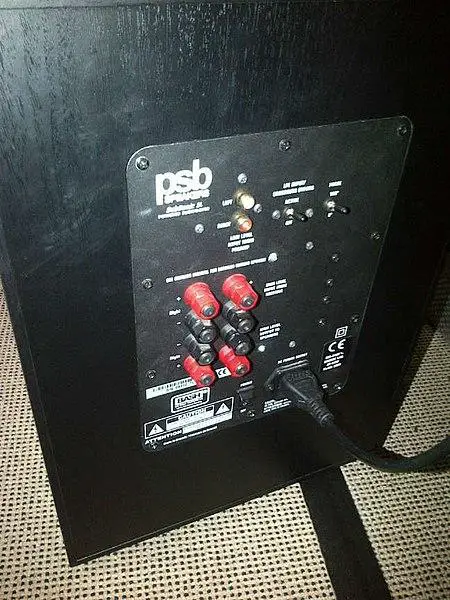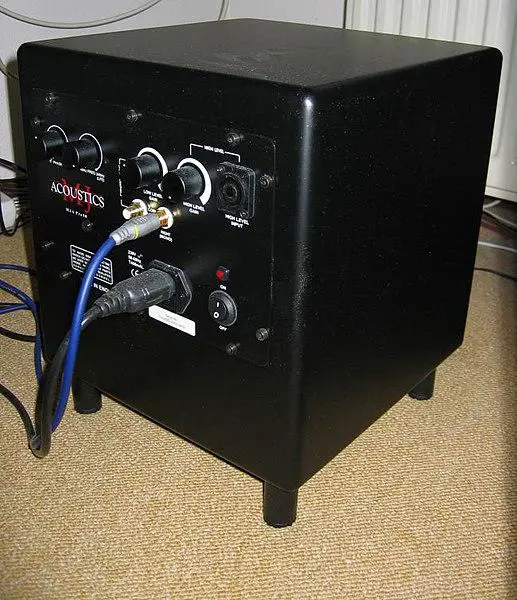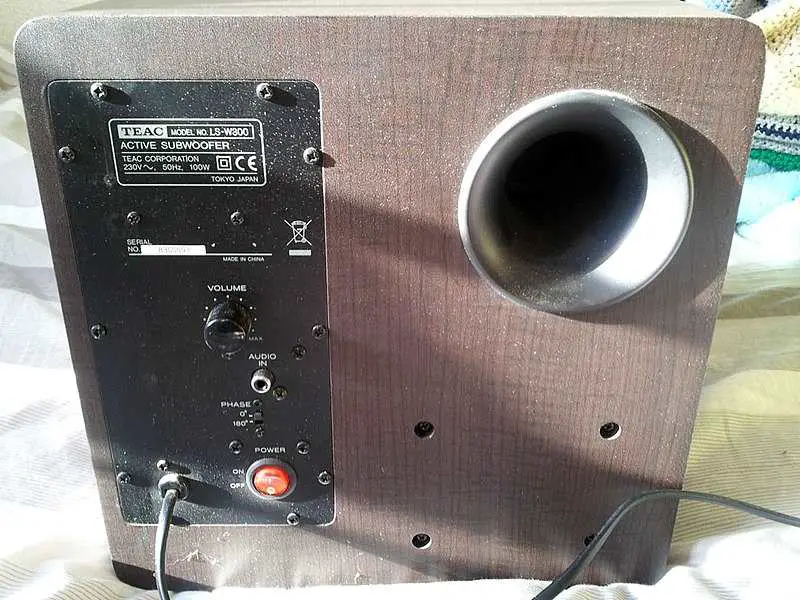Adding a subwoofer to your car’s audio system can greatly enhance the overall listening experience.
A subwoofer is a loudspeaker that is specifically designed to reproduce low-frequency audio, also known as bass.

This can add depth and dimension to your music, making it sound more dynamic and immersive.
However, not all car audio systems come with a built-in subwoofer.
In these cases, you can install a powered subwoofer and connect it to your existing passive speakers.
A powered subwoofer is a subwoofer that has its own built-in amplifier, while a passive subwoofer requires an external amplifier to function.
Passive speakers, on the other hand, do not have their own amplifier and rely on an external source of power.
In this article, we will be discussing how to connect a powered subwoofer to passive speakers in a car, so you can enjoy the benefits of a subwoofer without having to replace your entire audio system.
Equipment Needed
Before you start the installation process, you will need to gather the necessary equipment.
The following is a list of equipment that is typically needed to connect a powered subwoofer to passive speakers in a car:
Powered subwoofer: This is the main component of the system and is responsible for reproducing low-frequency audio.
RCA cables: These cables are used to connect the subwoofer to the external amplifier or the head unit of the car.
Line output converter: This device is used to convert the speaker-level signal from the head unit to a line-level signal that the subwoofer can understand.
Amplifier: This is used to power the passive speakers.
Speaker wire: This is used to connect the passive speakers to the amplifier.
It’s important to note that each car audio system is different, so the exact equipment you need may vary depending on your specific make and model.
It’s recommended to consult the subwoofer and passive speaker manual before purchasing the equipment.
Connecting the Subwoofer
Once you have gathered all of the necessary equipment, you can begin the process of connecting the subwoofer to your car’s audio system.
The following are step-by-step instructions on how to connect a powered subwoofer to passive speakers in a car:
- Begin by disconnecting the battery to prevent any electrical damage to your car’s audio system.
- Run the RCA cables from the subwoofer to the head unit of the car. The RCA cables will typically have one red and one white connector, with the red connector being for the right channel and the white connector for the left channel.
- Connect the line output converter to the speaker wire of the head unit. This will convert the speaker-level signal from the head unit to a line-level signal that the subwoofer can understand.
- Connect the amplifier to the passive speakers using the speaker wire.
- Finally, reconnect the battery to the car and test the subwoofer to make sure it is working properly.
It’s important to note that the specific instructions may vary depending on the type of car and audio system you have, so consult the subwoofer and passive speaker manual for specific instructions.

Setting Up the Subwoofer
Once the subwoofer is connected to the audio system, it’s important to properly set it up to ensure optimal sound quality.
The following are some tips on how to set up the powered subwoofer:
Gain:
The gain control on the subwoofer adjusts the input sensitivity of the amplifier.
It’s important to set the gain correctly to prevent distortion and ensure the subwoofer is working at its full potential.
It’s recommended to start with the gain control set at its lowest setting and gradually increase it until you reach the desired volume level.
Crossover:
The crossover control on the subwoofer is used to filter out frequencies that are not within the subwoofer’s range.
It’s important to set the crossover correctly to ensure that the subwoofer is only reproducing the frequencies it’s designed to handle.
Typically, a crossover frequency of 80 Hz is recommended for most subwoofers.
Phase:
The phase control on the subwoofer is used to adjust the timing of the subwoofer’s output in relation to the other speakers in the audio system.
Setting the phase correctly can improve the overall sound quality and make the subwoofer sound more cohesive with the other speakers.
A good starting point is to set the phase control to 0 degrees.
Testing:
Once the subwoofer is connected and set up, it’s important to test it to ensure it’s working properly.
Play a variety of music genres and listen for any distortion or rattling.
If you hear any of these issues, adjust the gain, crossover, and phase controls until you achieve the desired sound quality.

Conclusion
Installing a powered subwoofer to your car’s audio system can greatly enhance the overall listening experience.
By connecting a powered subwoofer to passive speakers, you can enjoy the benefits of a subwoofer without having to replace your entire audio system.
The process of connecting a powered subwoofer to passive speakers in a car can seem daunting, but with the right equipment and proper instructions, it’s a task that most DIY enthusiasts can handle.
Remember to consult the subwoofer and passive speaker manual for specific instructions and to test the system once it’s set up.
We hope this article has helped you understand the process of connecting a powered subwoofer to passive speakers in a car.
If you have any questions or need additional help, feel free to reach out to a professional installer or consult online resources. Happy listening!
Can I connect a powered subwoofer to any passive speakers?
Yes, in general, a powered subwoofer can be connected to any passive speakers as long as they are compatible with the subwoofer’s input and output requirements.
However, it’s recommended to match the subwoofer’s power handling capabilities with the power handling of the passive speakers to achieve optimal sound quality.
Is it necessary to use a line output converter when connecting a powered subwoofer to passive speakers?
A line output converter is typically used to convert the speaker-level signal from the head unit to a line-level signal that the subwoofer can understand.
However, not all car audio systems require a line output converter.
It’s important to consult the subwoofer and passive speaker manual to see if your specific audio system requires one.
Can I connect a powered subwoofer to my factory audio system?
Yes, it is possible to connect a powered subwoofer to a factory audio system.
However, the process may be more complex and may require additional equipment such as a line output converter or an amplifier.
It’s recommended to consult a professional installer or the subwoofer and passive speaker manual for specific instructions.
How do I know if my subwoofer is working properly?
A simple way to test if your subwoofer is working properly is to play a variety of music genres and listen for any distortion or rattling.
If you don’t hear any distortion or rattling, the subwoofer is working properly.
Additionally, you can test the subwoofer by adjusting the gain, crossover, and phase controls to ensure you are achieving the desired sound quality.
Can I add a powered subwoofer to my car’s audio system if it already has a built-in subwoofer?
Yes, you can add a powered subwoofer to a car’s audio system that already has a built-in subwoofer.
However, it’s important to ensure that the built-in subwoofer and the new subwoofer are compatible and that the power handling of both subwoofers is matched to achieve optimal sound quality.
Additionally, it’s important to consult the subwoofer and passive speaker manual for specific instructions.
